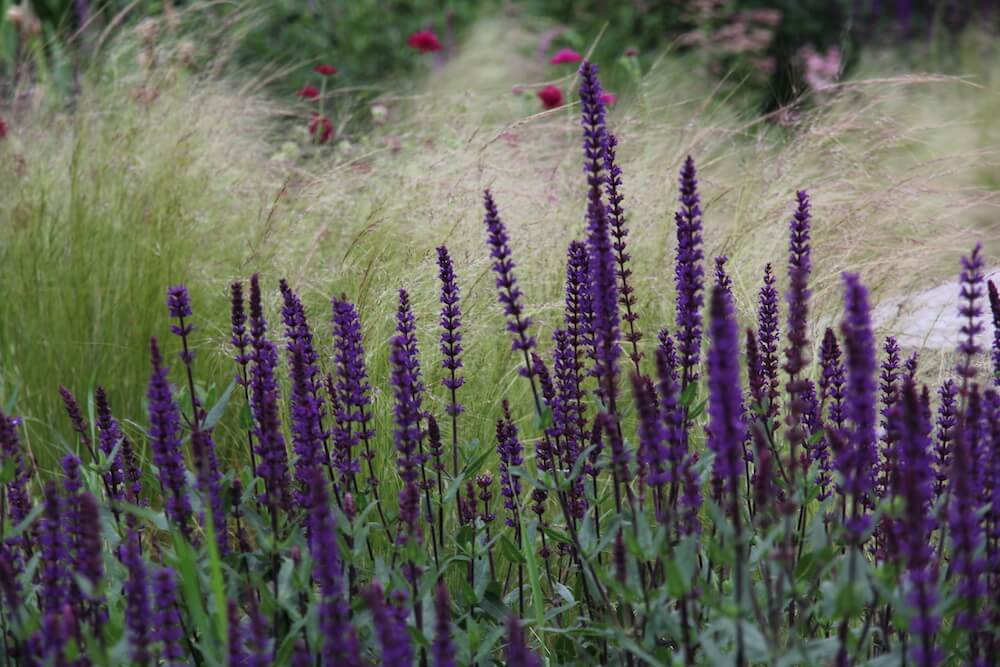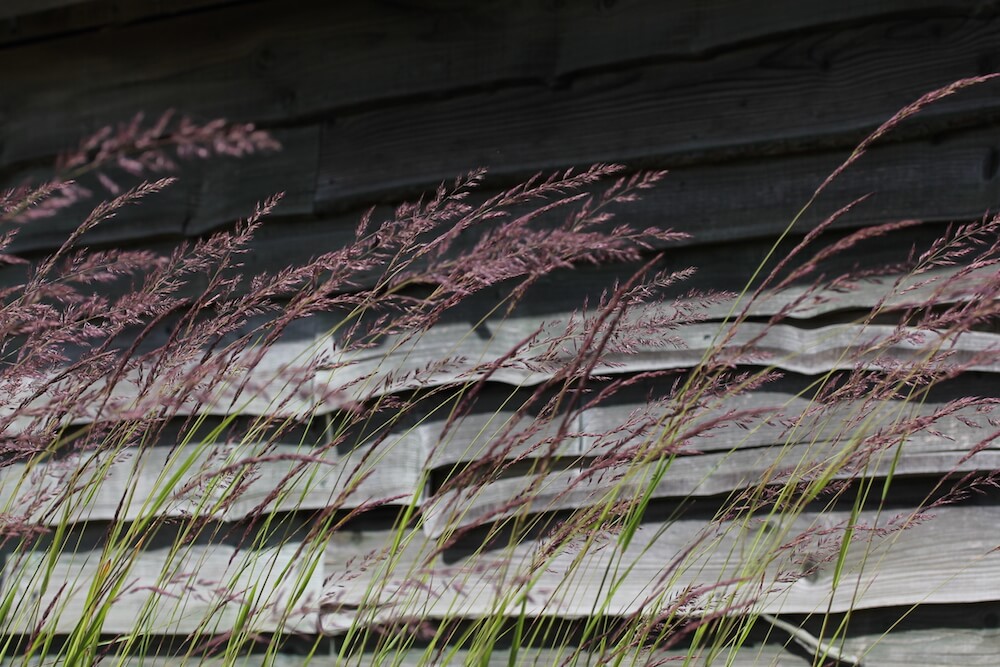It seems that we are firmly immersed in a distinct era of style here in the UK. This is not however, just an emerging fad or a trend, it’s more of a change of ethos and lifestyle, with attention to the details, and it seems to be a reflection of a nationwide resurgence in preference towards the natural, provenance, freshness and a desire for the sensibility of self-sufficiency.


In tandem with this, a modern prairie style has evolved across domestic and commercial gardens and landscapes. You can underpin this emergence – both in town and country as stemming from a universal yearning for simplicity. This we indeed share with the original foundation of the Prairie style movement pioneered by Frank Lloyd Wright during the first decade of the twentieth century. Back then it was a bold, new approach to domestic architecture, representing a dramatic shift in design that opposed conventional ways of thinking.

As it developed from 1894, the Prairie style became characterised by horizontal lines and masses, with the architecture of the houses embracing an all-encompassing philosophy of integration with the surrounding landscape. Wright referred to this as ‘organic architecture’; the primary principle of which that the building should look like it belongs to the site and naturally grew there.


As garden designers and installers of landscapes we have always worked to the belief that spaces truly affect how people feel and how well they function. Just as the interior of a home promotes day-to-day comfort and functionality, outdoor spaces are in direct relation to this and should extend these principles. Like the Arts & Crafts movement, the original Prairie style movement embraced simplicity and function, championing handcrafting and craftship in an oppositional response to assembly lines and dehumanised products and workers.
Our convergence into modern prairie style is quickly eradicating the notion of a style of garden and landscape that may have once seemed daunting and impossible to achieve to some. By paying attention to the details of nature, and opening up ourselves more and more as a nation to our native surroundings, terms like wildflower meadow, wildlife garden, cottage garden, cut flower garden need to no longer seem so allusive.



With the change of this outlook comes a change in our language of the day to day. These are positive and exciting times. Pick up any interiors magazine today and you witness the renaissance of botanics and wildlife across fabrics, wallcoverings, ceramics and art direction. Nature corners every curiosity and display. In fashion, perfect examples this season set Spring collections against meadows and prairie landscapes such as Calvin Klein, Roberto Cavalli, Paola Sebastian and Marc Cain collections. Vogue speaks of a ‘change in the air’ with a Spring full of floral prints in go-anywhere utility wear.

Early in our company’s career we were appointed to design and create a natural wildflower landscape on a vast scale surrounding an oak-clad modernist house. What naturally emerged as our designs evolved was a natural landscape that conformed to an informal pattern of rivers of plants. This acted to harness the wildness of the schemes with the house firmly acting as the anchor point. We chose to deploy a perennial discipline of prairie planting to some portions of the property in conjunction with native wildflower meadow planting. This modern prairie project resulted in a large undulated and graded landscape of distinct parts. Naturalised wildflower meadows surrounding a productive garden with Orchard, a natural swimming pool with rivers of perennial prairie style planting, and a take on a formal Victorian walled garden. This was achieved with inherited Beech hedges acting as the walls and an organically designed parterre containing more perennial prairie planting style schemes. These areas flowed to form a coherent journey, with the house at the heart. In classical prairie style it grew from the landscape as if was always there, at one with its surroundings.

Ever influenced by this project since, we as a company have encouraged our clients and blog readers to explore the use of more and more heritage flowers and prairie style planting by presenting these ideas in modern contexts. We always consider the modern prairie style to be somewhat painterly and with a strong focus on multi seasonal colour and balance. It’s a way of paring-back that wild, country look by containing it in contemporary formats.

Over the last decade we have seen an increase of wildflower popularity growing more and more in cities thanks to guerrilla gardening schemes and seed bombing alongside productive and edible projects in urban schools and communities. In that same time frame perennial grasses peaked on-trend and then quickly fell out of fashion almost as quick. Now with the firm positioning of modern prairie style in our culture those said grasses are creeping back in to favour again. With wider landscapes and a true sense of country at heart (both in town and country), we think that they will be planted in contexts and styles with more longevity this time round. We have certainly been utilising them more and more as a wider greenscaping medium in many of our projects for the past 3 years.



Hand in hand with the rise of the modern prairie style in garden and landscape design comes the rise of British Flower farmers and a growing market demand. This is all in turn impacting the wedding and floristry market with a clear and no-signs-of-abating trend towards natural, prairie style weddings. Hand tied jam-jar posies and bouquets, effortless archways and swags as if gathered from a hedgerow, vintage look backdrops and tablescapes all encapsulate prairie style and are the epitome of British style right now. – (more on this soon from us here on the journal!)
Prairie style was originally influenced by the transcendentalist philosophy of Ralph Waldo Emerson who said that better homes make better people. Modern prairie style today adheres to that same sentiment as it celebrates our British heritage and stands for a clear dedication to our future in sustainable ways. It is a time of achieving that much coveted effortless style that is now so attainable – it is indeed at our fingertips.

Interested in Modern Prairie style? Visit some of our projects Far End, Nest Cottage, Playwrite’s Barn, Blue Corner, The Bield, The Pasture. Also later this year – Lakeside, Low line & The Cowshed will be updated with new photoshoots added to our portfolio. Visit our Modern Prairie style guide here next and get started.

